Spring SciX 2022 | Edinburgh Instruments to Attend in Liverpool

April 11 – April 14, 2022
University of Liverpool, United Kingdom
We are pleased to announce that Edinburgh Instruments will be attending the 2022 Spring edition of SciX, which will be taking place from Apr 11 – Apr 14 2022 in Liverpool, UK.
Spring SciX is a UK-based meeting of the successful SciX series, covering a wide range of analytical chemistry research, with a focus on early career researchers. Join leaders in the analytical sciences as they present progress on emergent topics, meet with exhibitors, and networks over four days in Liverpool.
Spring SciX will highlight progress on emergent research topics related to analytical chemistry, including molecular spectroscopy, Raman Spectroscopy, mass spectrometry, infrared (IR) spectroscopy, surface plasmon resonance (SPR), process analytical chemistry, fluorescence, bioanalytical and biomedical, and analytical sciences.
During the course of the conference members of our team will be on hand to discuss all our latest products, research, and how our instruments can assist you with your work. If you’re attending Spring SciX and wish to arrange a time to chat with our team, please get in touch or contact us at sales@edinst.com. If you cannot make the exhibitions and would like to learn more about our products, feel free to contact us at sales@edinst.com and we will set up a time to have a one-on-one call. In the meantime, we have put below some information you might find interesting.
Featured Application Notes
Confocal Raman and Photoluminescence Microscopy for Forensic Investigations

Forensic investigations often study extremely small samples which may need analysed by multiple techniques. Confocal Raman and Photoluminescence (PL) Microscopy are well-suited techniques for dealing with forensic science samples. Only microscopic amounts of sample are required, and the techniques are non-destructive and non-contact meaning the sample can be further analysed using complimentary techniques. No sample preparation is required, and the results provide chemical and spatial information on sample components. This application note details how Raman and PL microscopy can be used as a forensic analysis tool in any laboratory.
Read the full Application Note here.
Identification of Microplastics Using Raman Spectroscopy

Microplastic analysis of materials found in our environment has become a priority to understand their potential impacts on human health. Raman microscopy offers unique advantages for microplastic analysis and identifying the chemical composition of the material. This application note demonstrates how the RM5 Raman Microscope combined with a spectral database can be used to identify three types of microplastics commonly found in marine environments.
Read the full Application Note here.
Featured Products
RMS1000 Raman Microscope

- Truly Confocal– multiple position pinhole for high spatial resolution, fluorescence and background rejection and application optimisation
- Five-Position Grating Turrets– for unrivalled spectral resolution from <0.1 cm-1 and coverage over 5 cm-1 – 30,000 cm-1
- Two Spectrograph Options– standard compact and long focal length spectrographs available for ultimate resolution, sensitivity, and stray light rejection
- Four Simultaneous Detectors– up to 4 detectors can be installed, including high efficiency TE-cooled CCDs, EMCCDs, InGaAs and more
- Photoluminescence Microscopy, Time-Resolved Measurements, Fluorescence Lifetime Imaging (FLIM) – extend the Raman capabilities to fluorescence and beyond
RM5 Raman Microscope

- Truly Confocal– with variable slit and multiple position adjustable pinhole for higher image definition, better fluorescence rejection and application optimisation
- Integrated Narrowband Raman Lasers– up to 3 computer controlled lasers for ease of use, enhanced stability and reduced footprint
- 5-Position Grating Turret– for unrivalled spectral resolution of <0.3 cm-1 and optimisation over the full spectral range <50 cm-1 – 15,000 cm-1
- Integrated Detectors– up to 2, including high efficiency CCD, EMCCD and InGaAs arrays for low noise, increased speed, high sensitivity and wide spectral range
What’s New at Edinburgh Instruments
Edinburgh Instruments Introduces New MicroPL Upgrade for Photoluminescence Spectrometers
Edinburgh Instruments is delighted to announce the introduction of a new upgrade for its photoluminescence spectrometers, designed and manufactured at their global headquarters in Scotland. The MicroPL upgrade enables the study of spectral or time-resolved photoluminescence of samples in the microscopic scale by converting an Edinburgh Instruments photoluminescence (PL) spectrometer into a combined spectrometer and microscope system. A wide range of microscope configurations, source coupling and detector options are available enabling both steady state and fluorescence lifetime microscopy, as well as automated maps.
Learn more about the new MicroPL Upgrade.
Variable Pulse Width and High Power Pulsed Laser Diodes
Edinburgh Instruments is delighted to launch a series of pulsed light sources for time-resolved photoluminescence spectroscopy. The VPL, VPLED and HPL series of pulsed diode lasers and LEDs expand the range of compact, monochromatic sources on offer, while the AGILE supercontinuum laser provides tunable picosecond pulses across the visible and NIR regions.
Discover the series of pulsed light sources for time-resolved photoluminescence spectroscopy.
Find out more about Spring SciX 2022
If you are interested in attending Spring SciX 2022, please visit the official website for more information. Registration for the event will open soon.








